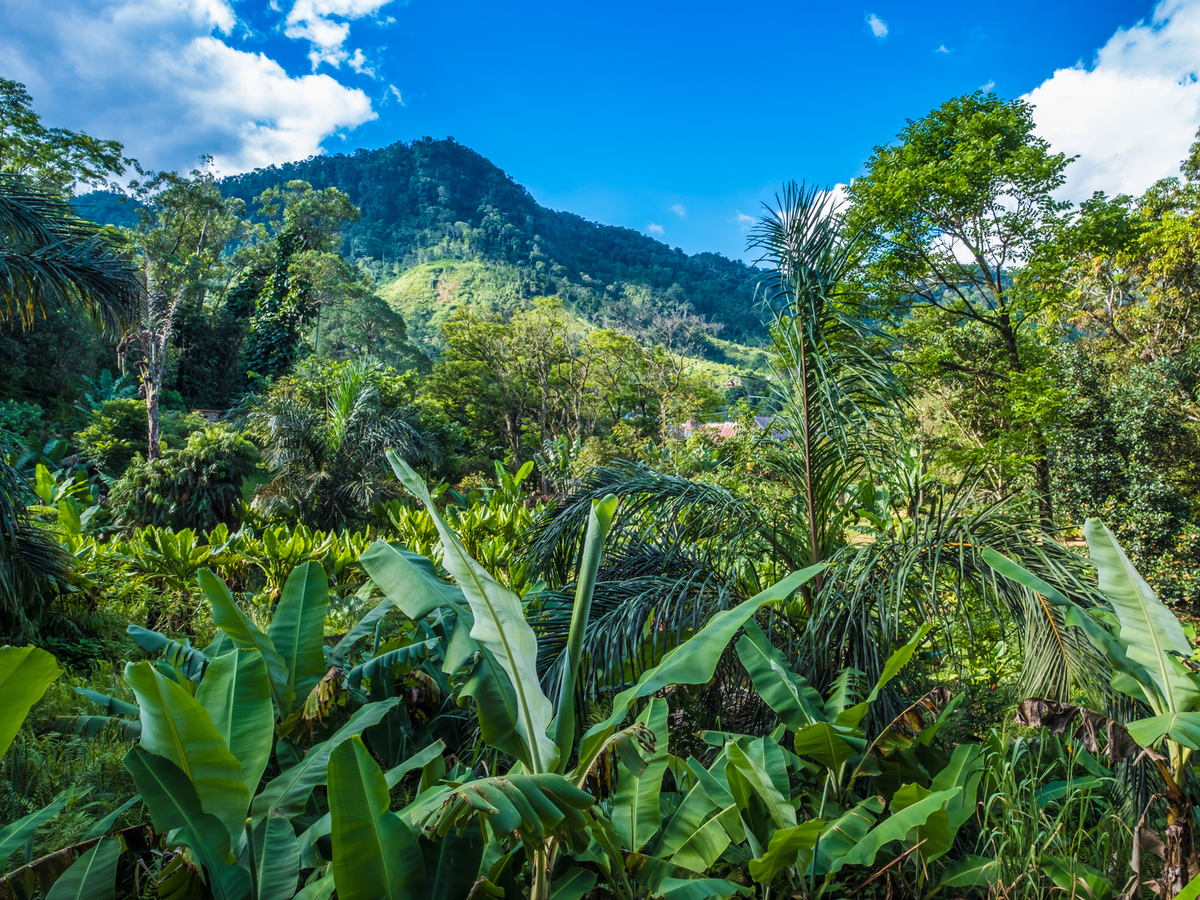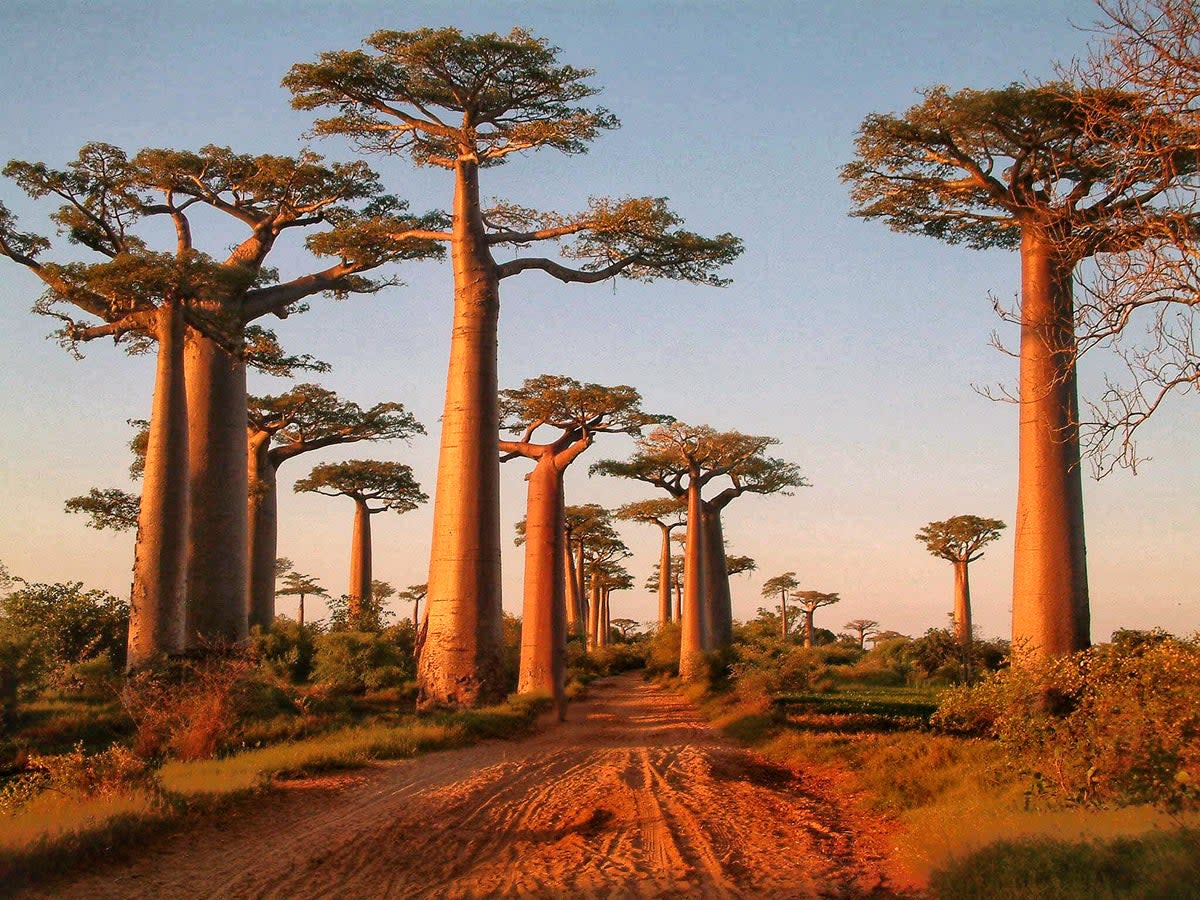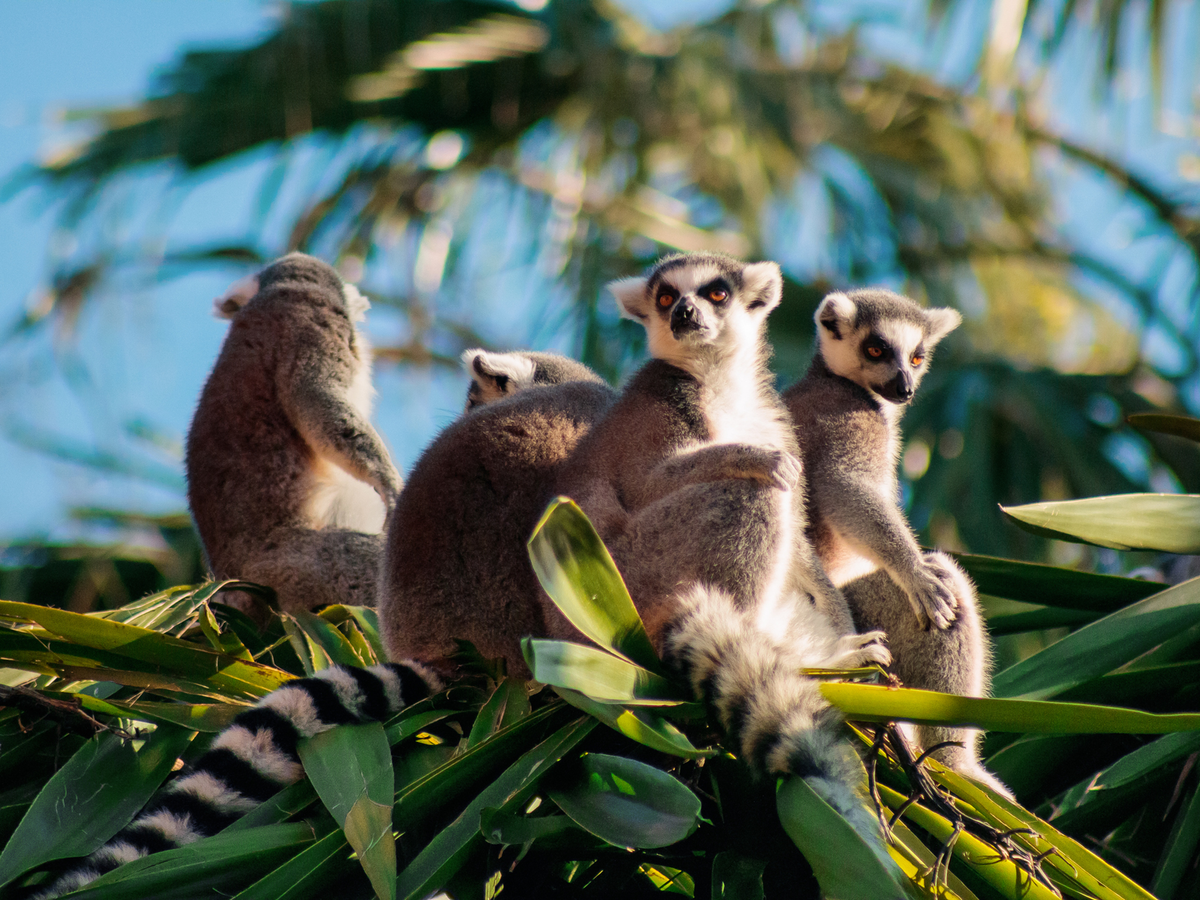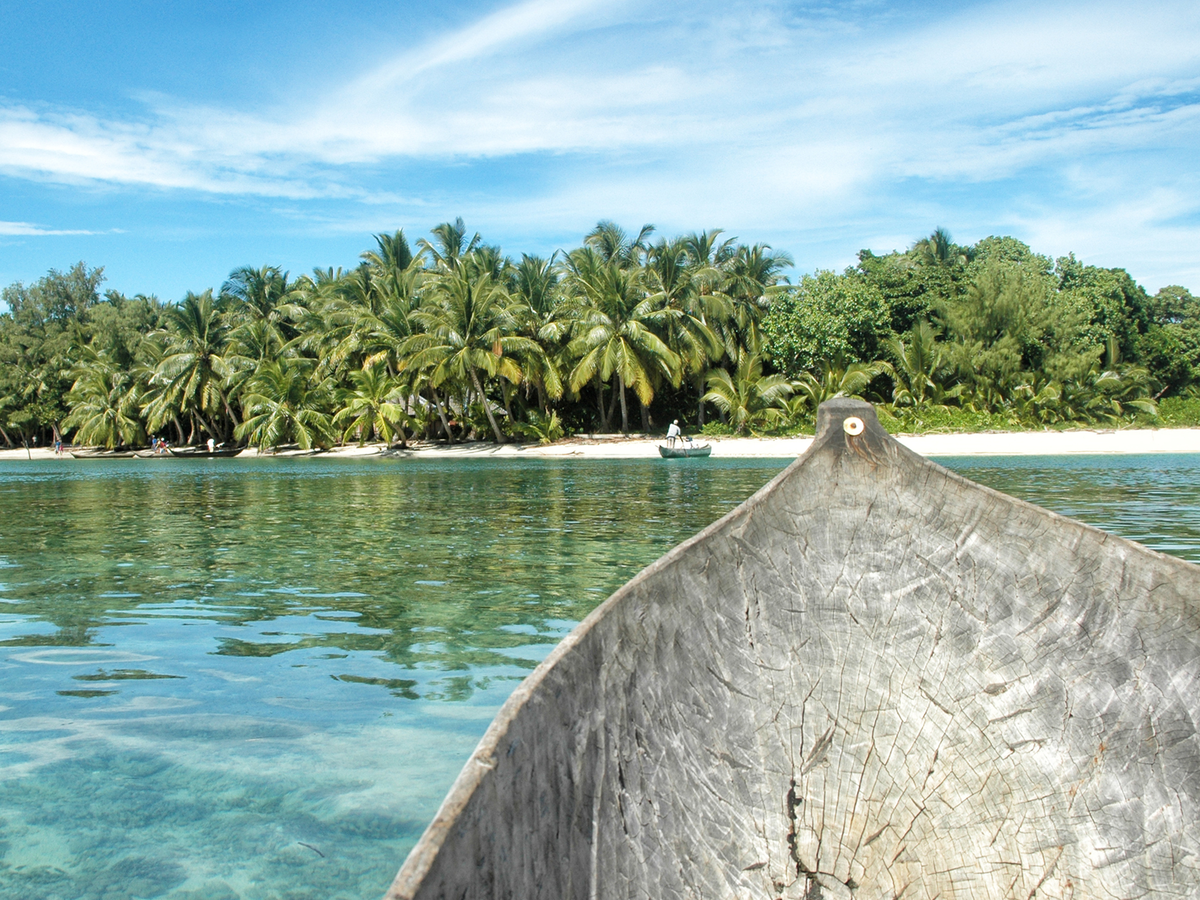Madagascar travel guide: Everything you need to know before you go

With its musical name, Indian Ocean atmosphere, French connections and faintly bizarre animals and plants, Madagascar is genuinely unique. Even its baobab trees offer a lesson in biodiversity: while mainland Africa makes do with a single species, Madagascar has six.
This remarkable island nation is scattered with precious fragments of tropical forest where frogs chirp, chameleons wobble and helmet vangas flash through the trees. But it’s the lemurs, of course, that shine out: with their foxy faces, bright eyes and fluffy fur, they’re the creatures that everyone wants to see. Happily, Madagascar’s best nature guides have an excellent knack for finding them.
Travel restrictions and entry requirements
Visitors from the UK can obtain 30-day tourist visas for free on arrival at Ivato International Airport, Antananarivo. Since 11 August 2022, arriving travellers have not been required to show proof of their Covid-19 vaccination or test status. There are no Covid-related restrictions in place in Madagascar.
Read more on Africa travel:
Best time to go

May to November brings the best, driest weather, with temperatures hovering around 20-25C by day and 10-15C by night; perfect for forest walks. To spot baby lemurs and see birds in their brightly coloured breeding plumage, arrive between September and November. For humpback whale-watching around Île Sainte Marie, July and August are best.
If escaping the crowds is your priority, you don’t melt in the sun and you’re focusing on the arid south (or are prepared to contend with serious downpours further north), the hot, quiet months of January to March are worth considering.
Top cities and regions
Parc National d’Andasibe-Mantadia
Imagine a rainforest, and it’s sure to look something like Andasibe-Mantadia: a shady green jungle of ferns, waterfalls and mighty hardwood trees, their branches looped with vines. It takes around three hours to drive here from the capital, Antananarivo, a journey that offers glimpses of the rural poverty that drives Madagascar’s conservation woes. But while many hectares of forest outside the park have been cleared for fields and timber plantations, Andasibe-Mantadia is hanging on. Local guides will lead you along dappled paths in search of sifakas, bamboo lemurs and indris, the large lemurs whose howls reverberate through the trees.
Nosy Be
Popular with French and Italian tourists, the ylang-ylang scented island of Nosy Be (pronounced Noosh Beh) has the kind of sandy, palm-fringed shores that lovers of beach holidays dream of. Despite having a greater concentration of hotels than anywhere else in Madagascar, it hasn’t lost its character. During the four-day Festival Donia in May or June, the island is at its liveliest, with local bands strutting their stuff. There are mouse lemurs, zonosaurus lizards and other rainforest creatures here, too, in the Lokobé Reserve.
Parc National d’Isalo
A target for travellers overlanding from Antananarivo to Tuléar in southwest Madagascar, Isalo National Park is laced with inviting hiking trails, leading through monumental, Jurassic-era landscapes. Striking rock formations, apparently assembled by giants, dot the plateau, among sandstone cliffs and canyons. Although rain falls relatively rarely, streams gurgle through the park, filling swimming holes and sustaining fire-resistant palm trees.

Allée des Baobabs and Kirindy Private Reserve
Strikingly photogenic, Morondava’s famous avenue of baobab trees is an icon of Madagascar – as is the mysterious fossa, an elusive, short-haired mammal that’s related to the mongoose, but looks like a cat-dog hybrid; fans of the Madagascar movies know them as King Julien’s evil enemies. You can track them in the dry, deciduous forest of Kirindy Reserve, where giant jumping rats and pygmy mouse lemurs are also found.
Réserve Privée Berenty
If your heart is set on capturing close-up photos of Madagascar’s perkiest, quirkiest primates, head for Berenty. Cavorting along the footpaths and around the grounds of this long-established primate research centre are ring-tailed lemurs with curious expressions and long stripy tails, plus Verreaux’s sifakas, goofy lemurs with a dancing gait. It’s not the most natural of settings, but it’s an enchanting place to spend time.
Best under-the-radar destinations
Parc National de Masoala
Breathtakingly remote but well worth the effort it takes to get here, Masoala National Park in northwest Madagascar is a vast swathe of coastal rainforest, crammed to the treetops with life. Tuck yourself away in a delightful little eco-lodge, and you can design your own mini-adventures – kayaking along quiet creeks with bird book at the ready, or spotting chameleons in the foliage hanging over the beach. With a nature guide, you can head deep into the forest by day or (even better) after dark, for close encounters with red ruffed lemurs, lizards and frogs.
Île Sainte-Marie
Far quieter than Nosy Be, with just a smattering of places to stay, the unspoiled island of Sainte-Marie, also known as Nosy Boraha, was a pirates’ refuge in the 17th and 18th centuries. It’s now better known as a refuge for whales: in late June each year, migratory humpbacks arrive from Antarctica to raise their calves in the calm waters between Sainte-Marie and mainland Madagascar. Local conservation organisation Cétamada, which is working in partnership with marine biologists to protect the whales and their habitat, can advise on how to watch whales by boat without harming them.

Tsingy de Bemaraha
The eerie but strangely beautiful expanses of grey limestone karst pinnacles, needles, crevasses and caves found in northwest Madagascar are Unesco World Heritage listed. They’re known as tsingy, which, aptly enough, means ‘place where you can’t walk’, but the locals have solved this problem by creating steps, trails, rope bridges and walkways, allowing fit and agile hikers to negotiate the spiky labyrinth of stone. Unexpectedly, perhaps, sifakas and woolly lemurs eke out an existence here, as do a great many species of birds, including buttonquails and harriers that are unique to Madagascar.
Best things to do
Lemur-watching
Madagascan primates have been evolving in isolation for more than 60 million years – long enough for them to bear little resemblance to monkeys, apes and humans. They’re mostly forest-dwelling and tragically, due to rampant logging, their habitat has dwindled to isolated pockets. One of the best ways to help reverse this trend is to visit national parks and community reserves as a paying ecotourist. There are over 100 species to discover. On guided forest hikes, you’re sure to find some, leaping through the trees or staring charismatically into the distance.
Nocturnal nature walks
If your heart is pounding at the mere thought of walking through a tropical forest after dark, relax: Madagascar is one of those magical places where dangerous animals are to all intents and purposes absent. Gear up your courage, grab a torch and follow your guide: your reward will be a sneak peek at a secret world. Scanning the trees for eyeshine and listening out for calls, you may encounter dwarf lemurs, comet moths, scops owls and perhaps the theatrically named satanic leaf-tailed gecko. Fascinatingly, you’ll also spot roosting birds, snuggled on branches; conscientious guides will make sure you don’t disturb them.
Getting around
Madagascar is the world’s second largest island nation, with spectacularly diverse landscapes. Many visitors book a guided tour of the highlights with transport included, but it’s also possible to travel independently.
Since distances are considerable and many of Madagascar’s rural highways are in a lamentable condition, the best way to cover several regions is to hop around with Air Madagascar. Unfortunately, they’re notoriously unreliable, changing flight times and dates with minimal notice; prepare accordingly.
On the ground, public transport tends to be rickety and crowded, so hiring taxis for short outings and renting a vehicle with a driver/guide for longer trips is a good investment.

How to get there
Madagascar is in the Indian Ocean, off Africa’s eastern coast. For all but the hardiest of sailors, the only practical way to arrive is by plane.
There are no direct flights from the UK to Antananarivo at present. The cheapest route is with Kenya Airways, flying via Nairobi in 19 hours. A faster alternative is Ethiopian Airlines, flying via Addis Ababa in 14.5 hours.
Money-saving tip
Airlines, tours and hotels offer low-season rates between mid-January and March. Weather-wise, this can be a challenging time to visit, with heavy rain drenching the centre and north, and cyclones battering the east coast. However in the south, rainfall remains low all year round.
FAQs
What’s the weather like?
Tropical: humid in the northeast, arid in the southwest and temperate in the central highlands. The coolest, driest months are May to October.
What time zone is it in?
GMT+3.
What currency do I need?
Malagasy Ariary (MGA). Tourism businesses accept ariary and euros. You can change pounds sterling at banks or withdraw ariary from ATMs.
What languages are spoken?
Malagasy and French. Tourist guides speak multiple languages, including English.
What health precautions should I take?
Consult your GP about anti-malarials and vaccinations.
Read more on the best winter sun hotels